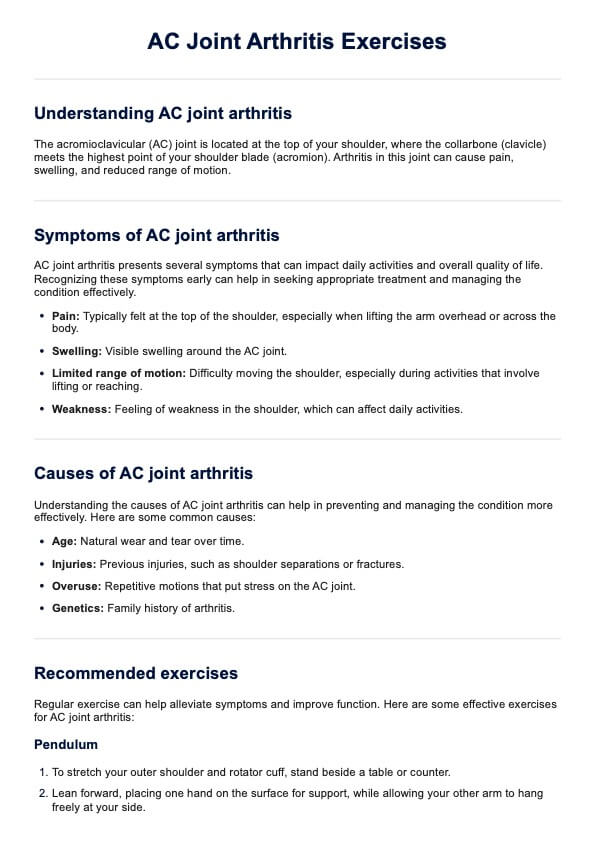AC joint arthritis is primarily caused by wear and tear on the joint, often due to repetitive overhead movements, previous joint injuries, or aging. It can also result from conditions such as osteoarthritis or rheumatoid arthritis.

Enhance patient care with our AC Joint Arthritis Exercises Handout. Learn about effective exercises, benefits, and why Carepatron is the ideal physical therapy software.
AC joint arthritis is primarily caused by wear and tear on the joint, often due to repetitive overhead movements, previous joint injuries, or aging. It can also result from conditions such as osteoarthritis or rheumatoid arthritis.
AC joint arthritis is typically diagnosed through patient history, physical examination, and imaging tests such as X-rays or MRIs. These tools help healthcare providers assess joint damage and inflammation.
Treatment options for AC joint arthritis include physical therapy, medications for pain and inflammation, lifestyle modifications, and, in severe cases, surgical intervention. Exercise is critical to managing ac joint injury symptoms and improving joint function.
EHR and practice management software
*No credit card required
Free
$0/usd
Unlimited clients
Telehealth
1GB of storage
Client portal text
Automated billing and online payments